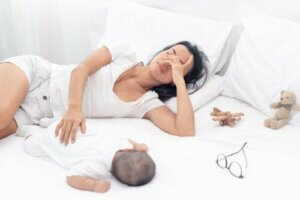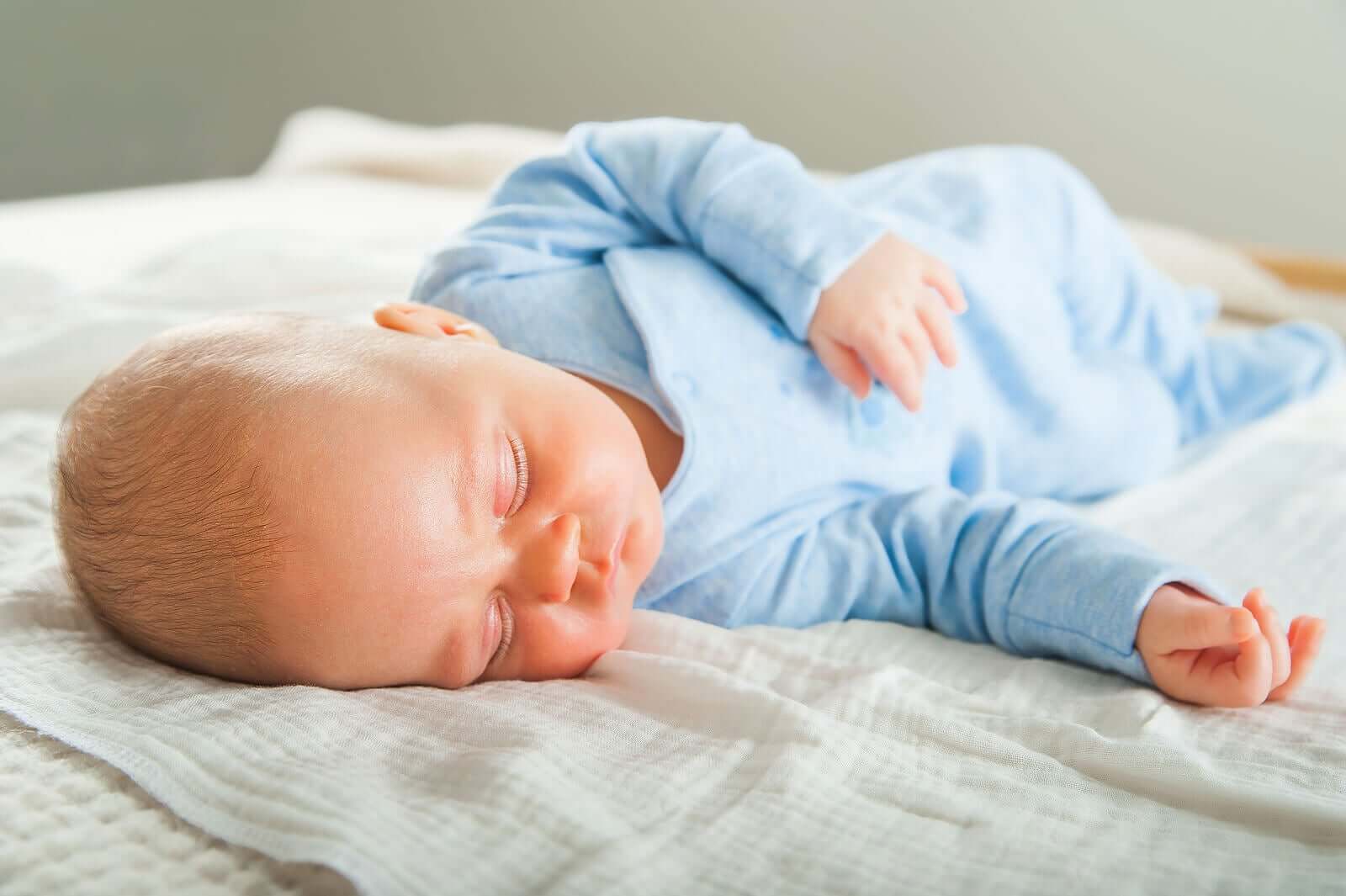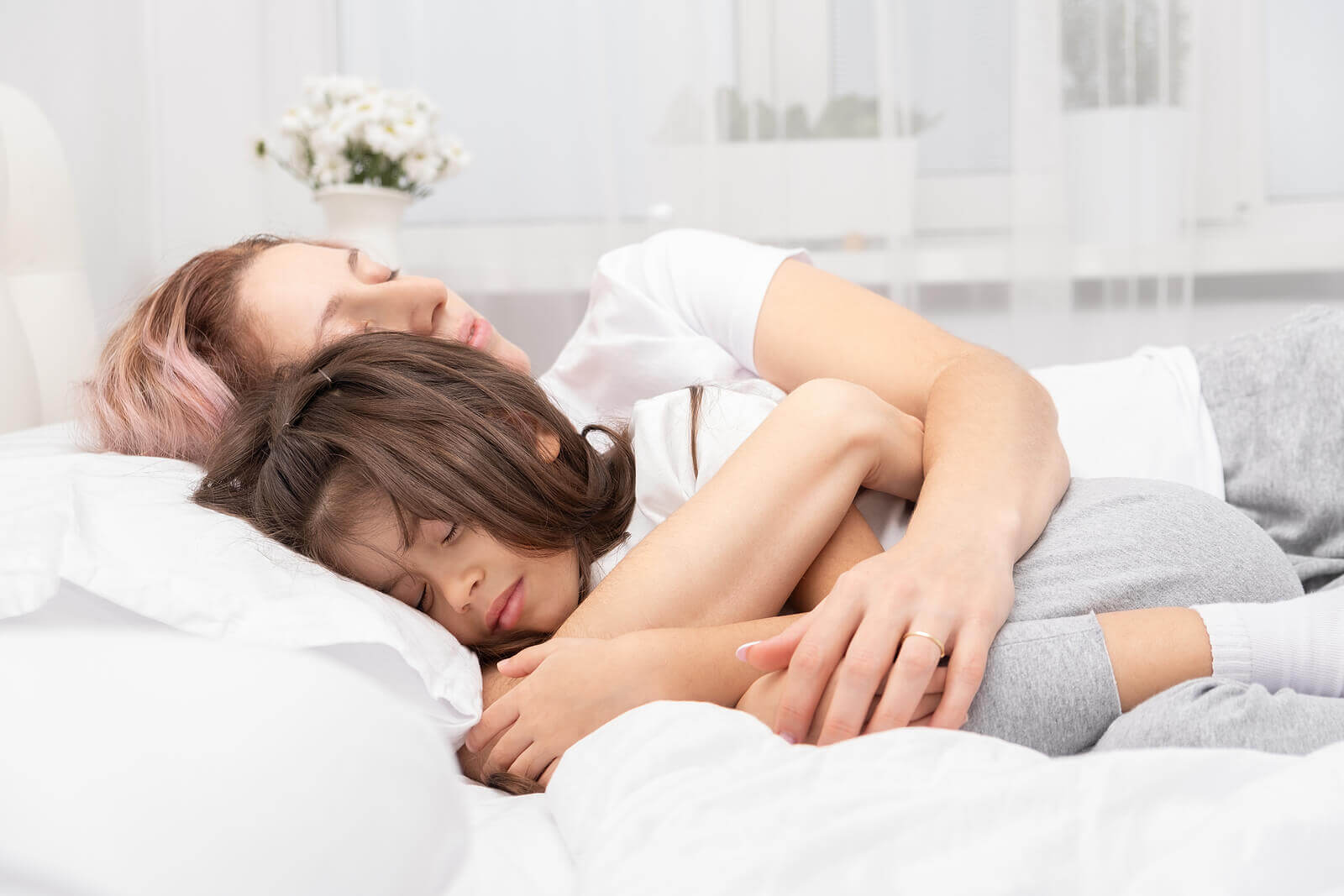Differences Between Sleep Cycles in Children vs. Adults

Children’s sleep cycle is one of the things parents always worry about. This is because good sleep results in proper physical and psychological development. What’s more, when kids don’t rest properly, parents don’t either. So, what are the differences between sleep cycles in children vs. adults?
Understanding their differences can help us know what to expect as our children grow up. Besides, we can be more prepared to face their first years of life.
People who have shared their home with kids will probably know some of the differences we’ll be talking about. However, sometimes it’s difficult to identify a problem from a natural development stage. Therefore, we’ll try to explain everything you need to know about sleep cycles in children in the following article.
What are the differences between sleep cycles in children vs. adults?

Sleep duration
One of the most notorious differences between sleep cycles in children vs. adults is their sleep duration. This is especially relevant when it comes to newborn babies. This is because, as they grow up, the difference becomes smaller. In fact, adults need approximately 8 hours of sleep, while babies need 17-18 hours of sleep, during their first 3 months old.
This amount gradually reduces by one hour per month. So, when babies are 6 months old, they sleep around 15 hours a day. And by the time they’re 1 year old, 13 hours a day might be enough. Once they’re 2 years old, 11 or 12 hours a day usually cover their sleep needs.
Sleep distribution
Sleep distribution is another important aspect that usually causes certain difficulties during children’s first years of life. During the night, adults sleep for one long period of time, whereas kids distribute their sleep time in short periods.
For example, a newborn baby sleeps around 18 hours a day, but they do it over different periods. They usually wake up every three hours and need to be fed and cared for.
In fact, babies tend to distribute their sleep time into 6 or 7 different periods during the day and the night. As a result, adults suffer from constant interruptions while they sleep, so their sleep cycle becomes affected.
However, as months go by, the babies’ sleep cycle becomes more similar to the adults’ cycle. For example, 70% of 3-month-old babies sleep for 5 hours in a row. Furthermore, when they’re 2 years old, they sleep for 11 hours during the night, and then take a little nap during the day.
Sleep stages
Another difference between sleep cycles in children and adults is the different stages they go through at night. Adults experience 100-minute sleep cycles, and go through 4 different non-REM sleep stages and 1 REM stage. On the other hand, kids experience 50-minute cycles, and go through 2 stages: REM and slow wave sleep. After they’re 6 months old, the rest of the stages become well defined.

It’s noteworthy how children’s REM stage is so much longer than adults’. This is due to the fact that during that stage, the brain goes through different learning and information assimilation processes. Of course, this is something babies need while they get to know the world around them.
Understanding how sleep cycles in children and adults differ
Finally, children are more prone to suffer from parasomnia (sleepwalking, nightmares, night terrors, etc.). However, while they grow, this risk diminishes. Bearing this information in mind is important to know what to expect and what to do during the process.
In addition, this information can be quite useful to overcome those first few months of your baby’s life, when lack of sleep may cause physical discomfort. Remember that this is just a period, and as your little one grows, you’ll go back to your normal sleep cycle as well.
Children’s sleep cycle is one of the things parents always worry about. This is because good sleep results in proper physical and psychological development. What’s more, when kids don’t rest properly, parents don’t either. So, what are the differences between sleep cycles in children vs. adults?
Understanding their differences can help us know what to expect as our children grow up. Besides, we can be more prepared to face their first years of life.
People who have shared their home with kids will probably know some of the differences we’ll be talking about. However, sometimes it’s difficult to identify a problem from a natural development stage. Therefore, we’ll try to explain everything you need to know about sleep cycles in children in the following article.
What are the differences between sleep cycles in children vs. adults?

Sleep duration
One of the most notorious differences between sleep cycles in children vs. adults is their sleep duration. This is especially relevant when it comes to newborn babies. This is because, as they grow up, the difference becomes smaller. In fact, adults need approximately 8 hours of sleep, while babies need 17-18 hours of sleep, during their first 3 months old.
This amount gradually reduces by one hour per month. So, when babies are 6 months old, they sleep around 15 hours a day. And by the time they’re 1 year old, 13 hours a day might be enough. Once they’re 2 years old, 11 or 12 hours a day usually cover their sleep needs.
Sleep distribution
Sleep distribution is another important aspect that usually causes certain difficulties during children’s first years of life. During the night, adults sleep for one long period of time, whereas kids distribute their sleep time in short periods.
For example, a newborn baby sleeps around 18 hours a day, but they do it over different periods. They usually wake up every three hours and need to be fed and cared for.
In fact, babies tend to distribute their sleep time into 6 or 7 different periods during the day and the night. As a result, adults suffer from constant interruptions while they sleep, so their sleep cycle becomes affected.
However, as months go by, the babies’ sleep cycle becomes more similar to the adults’ cycle. For example, 70% of 3-month-old babies sleep for 5 hours in a row. Furthermore, when they’re 2 years old, they sleep for 11 hours during the night, and then take a little nap during the day.
Sleep stages
Another difference between sleep cycles in children and adults is the different stages they go through at night. Adults experience 100-minute sleep cycles, and go through 4 different non-REM sleep stages and 1 REM stage. On the other hand, kids experience 50-minute cycles, and go through 2 stages: REM and slow wave sleep. After they’re 6 months old, the rest of the stages become well defined.

It’s noteworthy how children’s REM stage is so much longer than adults’. This is due to the fact that during that stage, the brain goes through different learning and information assimilation processes. Of course, this is something babies need while they get to know the world around them.
Understanding how sleep cycles in children and adults differ
Finally, children are more prone to suffer from parasomnia (sleepwalking, nightmares, night terrors, etc.). However, while they grow, this risk diminishes. Bearing this information in mind is important to know what to expect and what to do during the process.
In addition, this information can be quite useful to overcome those first few months of your baby’s life, when lack of sleep may cause physical discomfort. Remember that this is just a period, and as your little one grows, you’ll go back to your normal sleep cycle as well.
All cited sources were thoroughly reviewed by our team to ensure their quality, reliability, currency, and validity. The bibliography of this article was considered reliable and of academic or scientific accuracy.
- Pin Arboledas, G., & Ugarte Libano, R. (2010). Lo que el pediatra de Atención Primaria debería saber sobre el sueño. Pediatría Atención Primaria, 12, s219-s230. http://scielo.isciii.es/scielo.php?pid=S1139-76322010000500012&script=sci_arttext&tlng=pt
- Cabano, S. (2014). El sueño infantil y el apego. Recuperado 4 de febrero de 2021, de https://www.colibri.udelar.edu.uy/jspui/bitstream/20.500.12008/4398/1/Santiago%20Cabano.TFG.2014.pdf
- Segarra, F. J. Principales trastornos del sueño en la infancia y adolescencia. Recuperado 4 de febrero de 2021, de http://www.centrelondres94.com/files/principales_trastornos_del_sueno_en_la_infancia_y_adolescencia.pdf
This text is provided for informational purposes only and does not replace consultation with a professional. If in doubt, consult your specialist.








